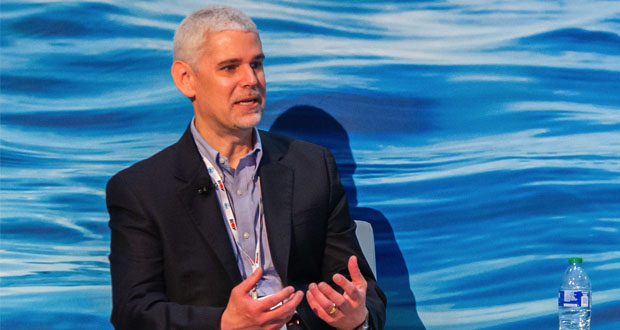ExxonMobil: Deepwater oil and gas still offer sweet spot for meeting growing energy demand

By Jessica Whiteside, Contributor
Trillions of dollars of investment in oil and gas will be needed over the next 20 years to meet even the most conservative estimates of future energy demand – and deepwater resources will be an important part of the mix, according to an ExxonMobil speaker at the 2022 Offshore Technology Conference.
“It’s hard to imagine energy demand doing anything but increasing even as we go through the next decade,” said Jeff Weidner, Vice President Deepwater Portfolio for the ExxonMobil Upstream Research Company on 4 May.
International and national oil companies are trying to streamline their portfolios and focus on the most advantaged resources to meet that demand, he said. But companies now have to consider not only traditional metrics such as profitability, materiality and rate of return but also carbon-related metrics such as full-cycle carbon intensity and GHG emissions.
He described deepwater projects as offering a “sweet spot” that combines huge volumes of resources with the potential to get online more quickly than projects like LNG plants. ExxonMobil has found a such a sweet spot in Guyana and has sanctioned four projects there since its initial Liza discovery in 2015. Just this year, the company has announced five new discoveries, boosting the estimated recoverable resources in the Stabroek Block to nearly 11 billion oil-equivalent barrels.
“When you have something that large, that’s when you can start to see from a deepwater perspective that this is an advantaged resource,” Mr Weidner said.
Because a deepwater project can produce for upwards of 20 years, a discovery made this decade could still be producing by mid-century – the same time frame as many of the world’s net-zero carbon targets. This means that companies making deepwater decisions today must be “environmentally mindful” of the potential impacts of a low-carbon future, Mr Weidner said.
He noted that ExxonMobil expects to see incremental improvements in its GHG emissions from each of its new FPSOs in Guyana. For example, the Liza Unity, which started production in February, is the world’s first FPSO to receive a SUSTAIN-1 designation by ABS for alignment with the United Nations Sustainable Development Goals.
“We really want to be among the best in industry as far as that footprint,” Mr Weidner said.
ExxonMobil is also looking to leverage infrastructure synergies to drive down the overall cost of supply, Mr Weidner said, noting that this is particularly applicable when you have a number of fields in close proximity. But doing this will require the industry to enable longer and longer tiebacks. In order for companies to effectively utilize existing deepwater infrastructure, their design should incorporate more flexibility to accommodate future opportunities, such as additional well slots.
The ability to get online quickly is a key factor for deepwater success, Mr Weidner added, and requires alignment with co-ventures, local governments, suppliers and contractors. He noted that while the great offshore discoveries in Angola in the 1990s took until the mid-2000s to come online, ExxonMobil and its partners achieved first production in Guyana in 2019, just four years after the initial discovery.
“We’ve kind of thrown down, I think, a little bit of a gauntlet to say that ‘OK, you can do it this fast.’”
On the other hand, companies must also take extra care when considering and developing new technologies, weighing whether benefits like time savings are worth the additional costs: “We need to be careful not to be blinded by the new shiny thing that’s out there.”




